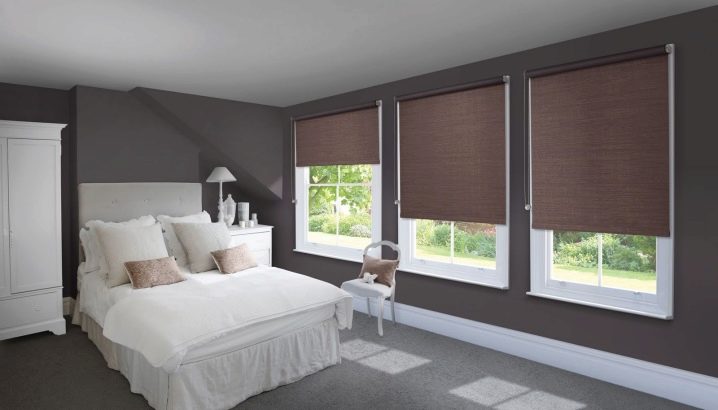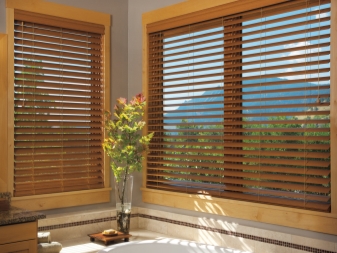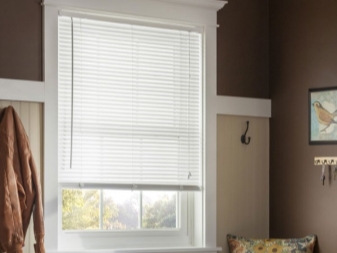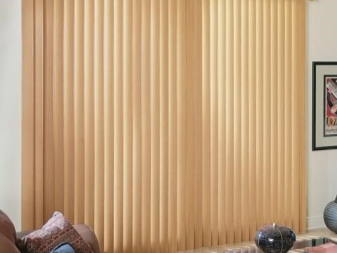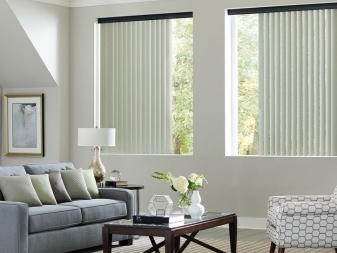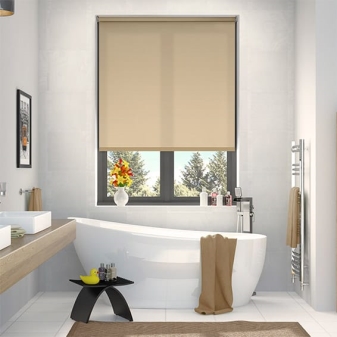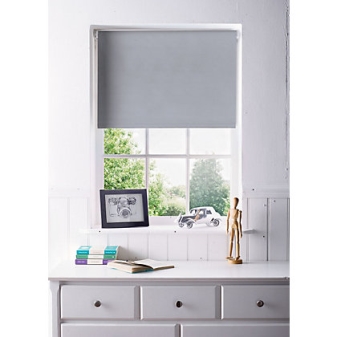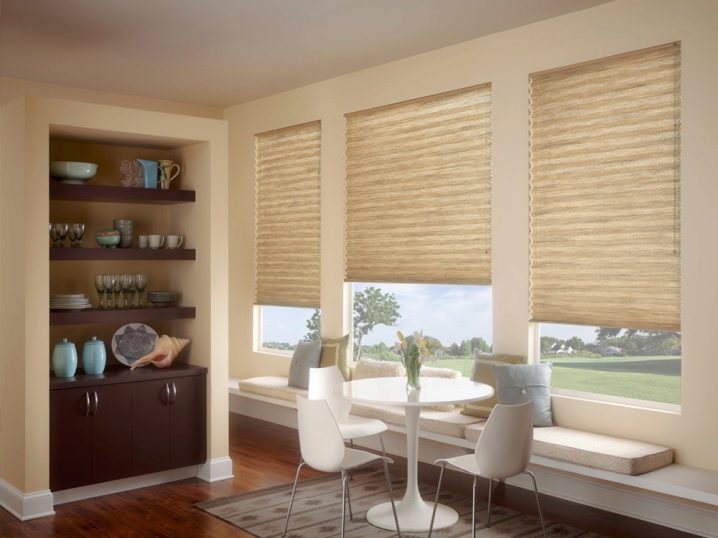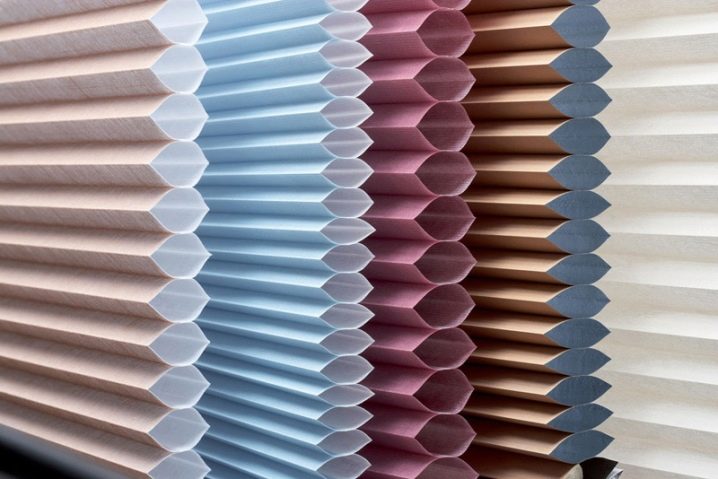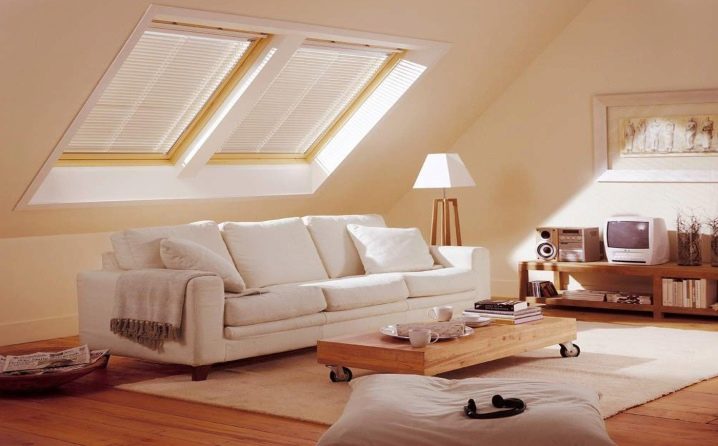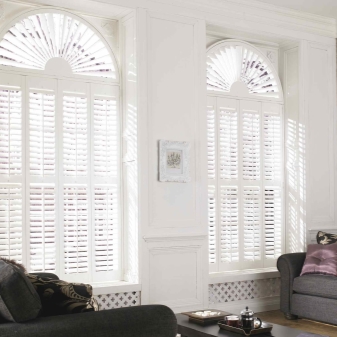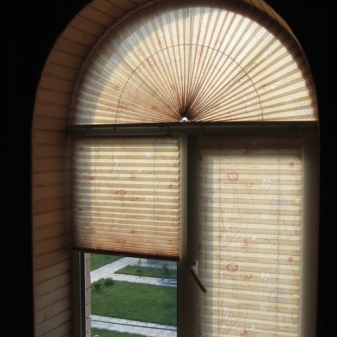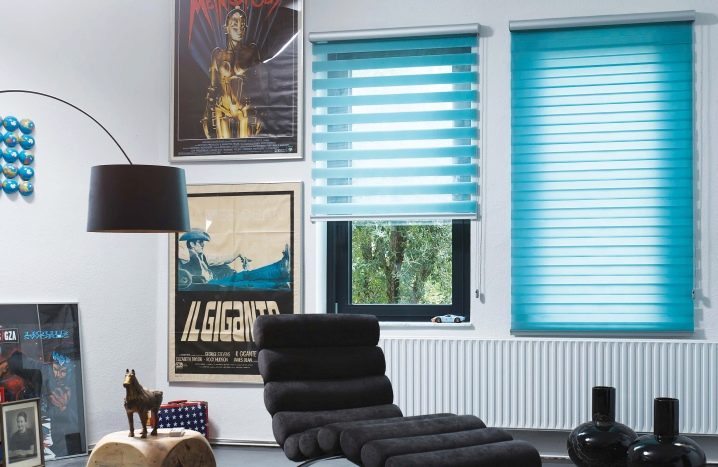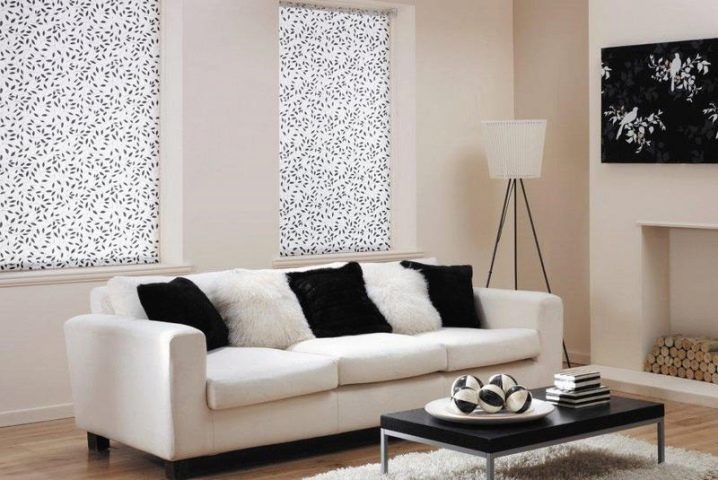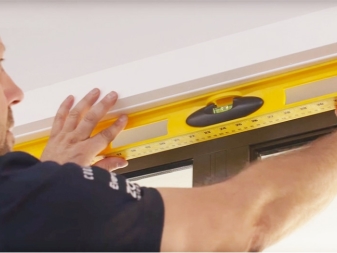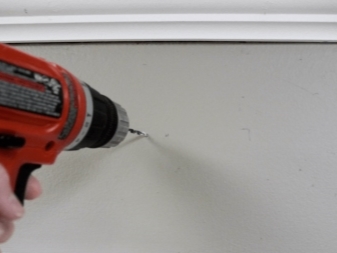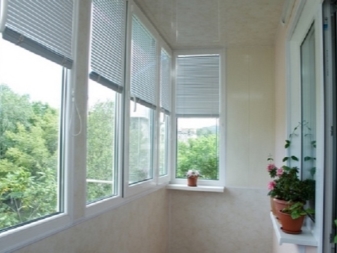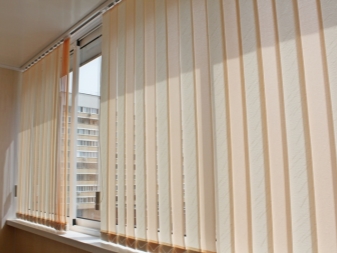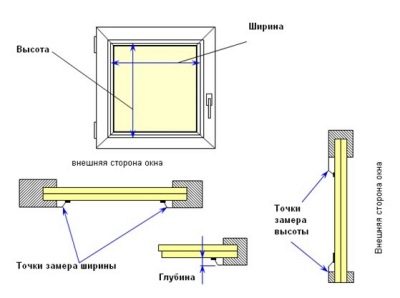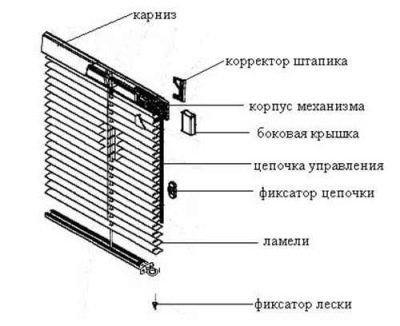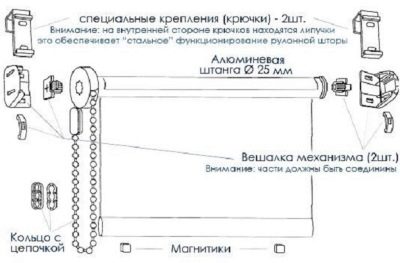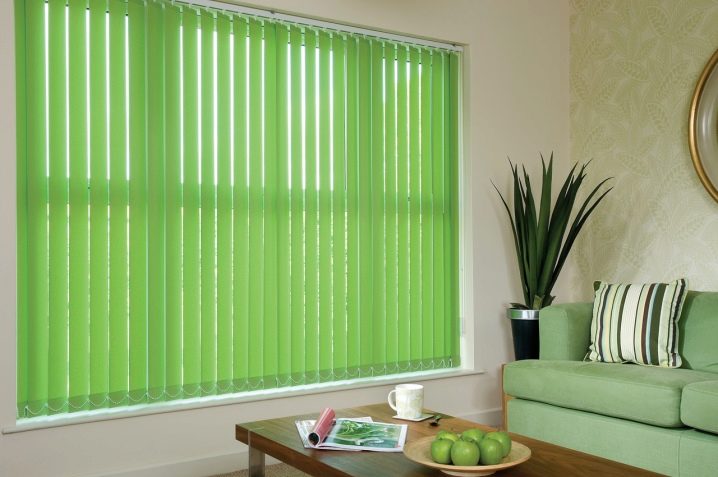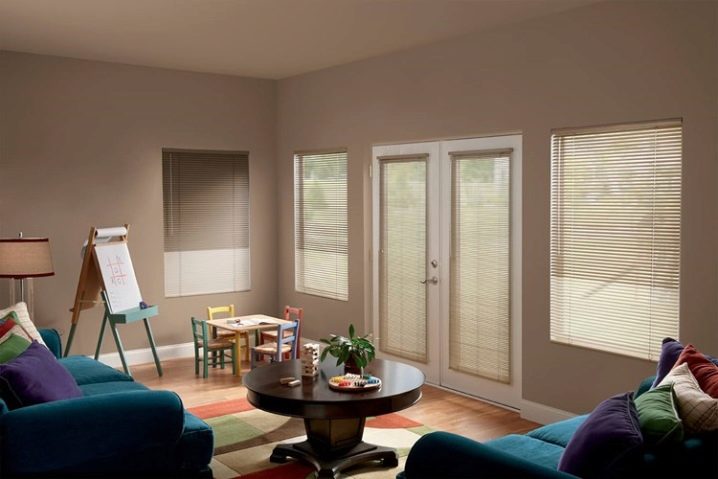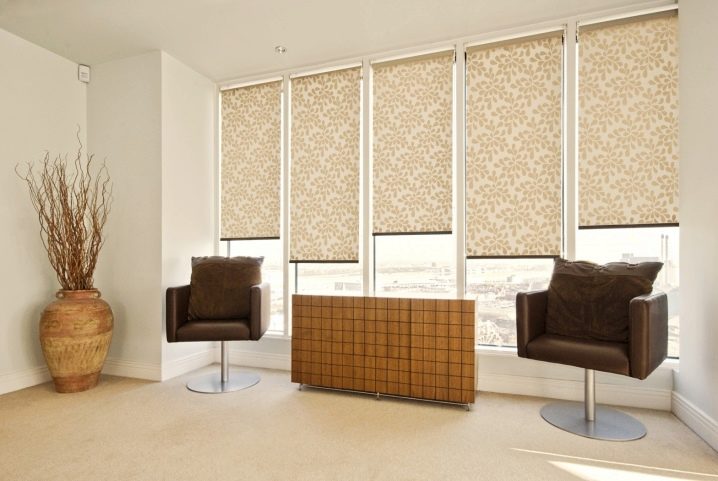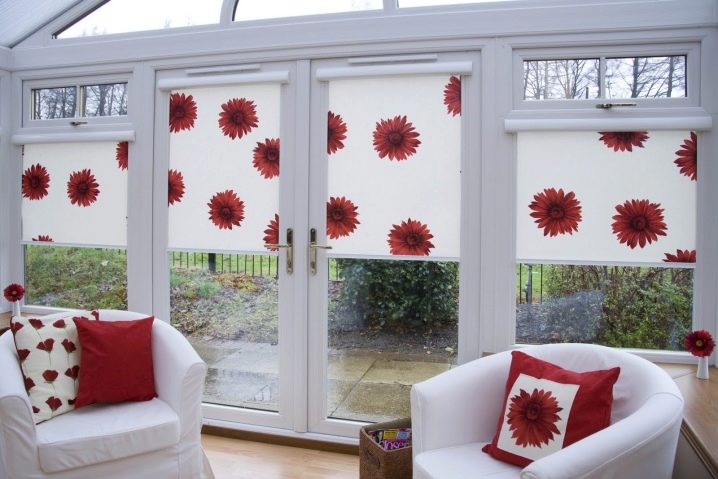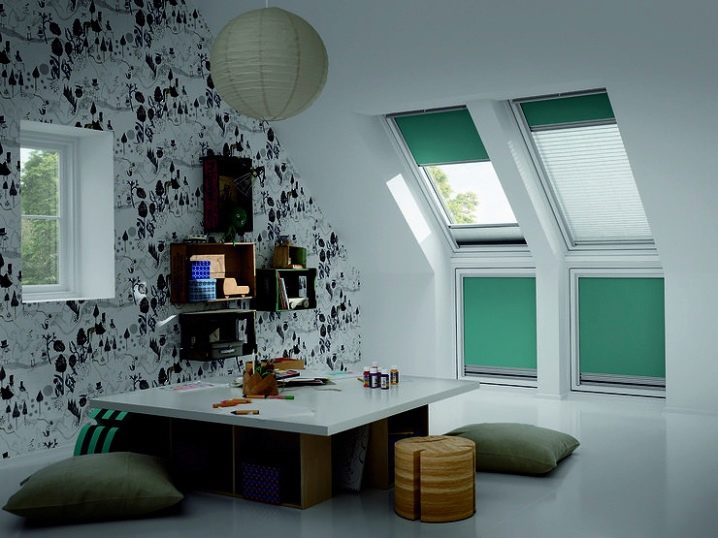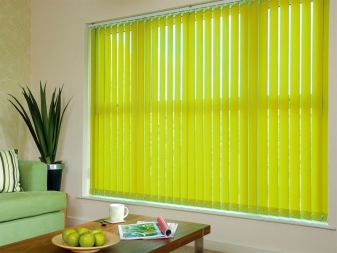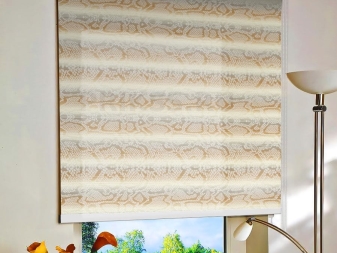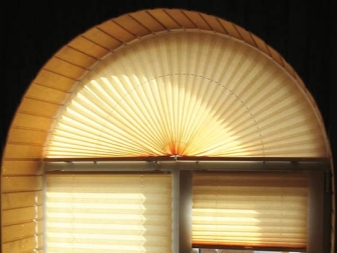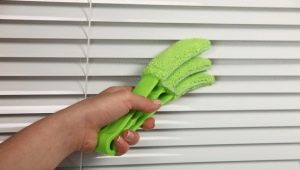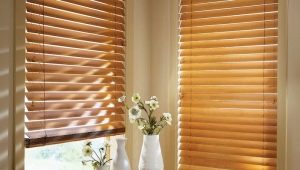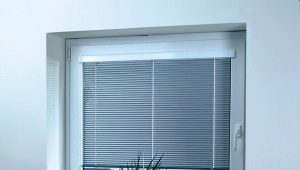Installation of blinds
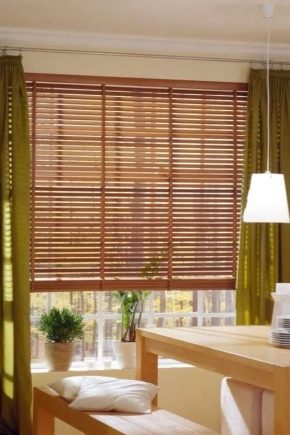
Installing blinds solves many problems with window decor. Curtains, drapes, tulles, of whatever fabric they are made, require frequent washing, because they accumulate dust and dirt. The density of the curtains depends on how well they let in or block the light.
Blinds are much more convenient than curtains in many aspects.
Depending on the angle at which the lamellas are located, they completely open access of natural light to the room, partially block it, gently scatter or completely isolate the room not only from light, but also from thermal radiation. They do not require special care, and install the blinds themselves will not be difficult.
Species
Horizontal
The light-protective construction with a horizontal arrangement of slats, which has become a familiar, almost classic for window decoration.
Benefits:
- Compactness.They are installed directly on the window, leaving the window sill free. This saves space and allows you to place the greens on the window in favorable conditions for it;
- Low weight design;
- Strength and stiffness of the lamella, preventing deformation;
- Fire safety;
- Simple control mechanism;
- Special coating or impregnation from dust, dirt, odors and grease;
- Resistance to humidity and temperature extremes;
- Different materials for the manufacture of slats: wood, plastic, aluminum, less tissue;
- Easy installation;
- Affordable price.
Some drawbacks are worth mentioning:
- When mounted on a frame, limit the angle of inclination of window frames when opening;
- Lamels emit a characteristic knock or ringing with the wind. To avoid this, it is necessary to purchase lower fasteners that are not included in the kit and quickly become unusable;
- The design is subject to repair in case of severe deformation of several lamels, but it will cost as new blinds;
- Not suitable for balconies and loggias with sliding windows.
Vertical
From horizontal distinguishes them:
- More aesthetic appearance.Horizontal blinds are rather functional, while vertical decorative;
- The ability to cover a large area with one cornice. Horizontal blinds, as a rule, consist of narrow slats and are designed for minimalistic decoration of small windows. Vertical models have different widths and easily cover the area of large windows, arches and doorways.
- A variety of materials. They can be from wood fibers, wood, aluminum, bamboo, plastic, woven and non-woven cloth, mirror, blackout, and cotton. The abundance of materials provides another advantage - the variability of colors and textures;
- The modern and original design of a window opening more opportunities for design;
- Simplicity of control mechanisms. Perhaps both mechanical and electrical;
- The ability to place on the "curtains" photo printing due to the larger surface and the best material characteristics;
- Practicality. Larger slats are easier to wipe if necessary, which does not occur often. If in case of heavy pollution, for example, in the nursery, the lamellae still need to be subjected to hygienic procedures, it will not take much time - they can be washed on the hands and in the washing machine;
- Possibility of installation on non-standard windows (triangle, trapezium, arch, bay window);
- The design is subject to repair. To replace one or another part you do not need to call the master, it is simple enough to make it yourself. You can replace the slats one by one without having to dismantle the entire structure.
Vertical blinds, as the name implies, are a simple and convenient light-protective construction consisting of longitudinal vertical plates.
Rolled
Roller blinds, roller shutters are one-piece cloths, more often from textiles, but other materials are possible, which are rolled upward in the type of horizontal blinds. The height can be adjusted by locking the curtain with the help of a weighting agent on the lower bar of the canvas.
There are different types of roller shutters: with an open drum (for attaching directly to the window) and with a decorative cornice; "Mini" for installation on each frame separately and "roll-cassette" for shading the entire window.
There is an opinion that roller blinds are the most budget and practical option for window decoration, but this is not entirely true. Of course roller shutters have their advantages: a variety of natural and synthetic fabrics, colors and patterns, ease of care (wet cleaning allowed) and operation, the ability to fix the curtain at the right height, special impregnation from dust, moisture, high temperatures and glare, compatibility with other types of curtains. It is convenient, if necessary, to hide the room from the sun, to decorate the window with beautiful tulle so that it is not visible from the street what is happening inside.
But with so many advantages, they have significant drawbacks.:
- Budget price - it's a delusion. Yes, by itself, a curtain of medium size from a common material will be inexpensive, but it will look boring. In order for the window decoration to be complete, it is necessary to think out an additional decor, and this increases the cost at times;
- Roller blinds in the bedroom, study and rooms with high windows need electric control. Designs on the electric drive differ in high cost, and in some manufacturers also produced noise;
- Is impossible customize the curtain of a certain textile. You can select only specific products of a particular brand,as the set of fabrics for the production of roller blinds is very limited: translucent, textured, reflective, perforated, blackout and all, perhaps;
- Max width roller blinds - 280-300cm, that is, to close a large area with one cornice, for example, a panoramic window or balcony will not work;
- Can problems arise with the installation not on the wall, but in the window opening, since the reel is wider in width than the curtain itself. On the sides of the window openings will inevitably remain gaps. Ceiling or wall mount is preferred.
Pleated
This kind of blinds is similar to both horizontal and rolled. The design consists of a control mechanism (chain or electric drive), weighting, pleated fabric, which resembles an accordion.
The range of material, colors and textures is very diverse.
Features:
- They are closed from top to bottom, like classic canvases, from bottom to top or from both sides at the same time. At the same time, the degree of density of the “accordion” can be adjusted, thus closing either the upper, or lower, or central part of the window;
- Suitable for shading windows of irregular shape;
- The optimal solution for dormer, attic, ceiling and sloping windows;
- “Opening”, the canvas compactly gathers in a fold and hides inside the eaves;
- Convenient for installation on all types of windows;
- Various mounting methods and control mechanisms (manual and electric);
- The cloth from woven material can be erased;
- The curtain can be made of two types of fabric at the same time, which makes it possible to adjust the degree of transparency, darkness, protection from the sun;
- Easy installation can be done by hand.
Kinds of pleats:
- Classic. In appearance, they are most similar to horizontal blinds, but they can also be vertical. Made from fabric, paper or plastic. Designed to darken the room, protect against heat from the sun, zoning the interior of the room.
- Corrugated. This type is a vertical and horizontal double pleating. As a result, the folds look smoother, neat and dense. Corrugated plastic and paper in this design absorbs a significant portion of the heat and protects against bright light.
- Inclined. A kind of plisse specifically for windows that are angled in the attic or ceiling. Their feature is in a specific assembly system, which does not allow a web of any material to sag, being at an angle. Mostly inclined models are available with electronic control.
- Arched. Maximum flexible webs that take any shape, like a paper fan. The successful solution for rooms with a non-standard window shape (arches, trapezoids, triangles, beveled windows).
- "Day Night". The fabric of such blinds consists of two layers of fabric: a light fabric that allows a large amount of light to pass through for daytime use and is dense, dark for protection from the bright sun during the day and prying eyes in the evening.
Cassette
Such systems involve either the use of horizontal slats, or a solid canvas, but are not at the same time horizontal blinds or roller blinds. They differ in types of cassettes (angular, round, flat), controls (various types of mechanical and remote), materials used (plastic, textiles, bamboo, aluminum).
Their main feature is the design, the special structure of which makes it possible to fix the blinds at a minimum distance from the window glass.This prevents deformation, sagging, the appearance of folds and irregularities, fully opens the window sill.
Benefits:
- Compactness. Cassette blinds occupy a minimum of space, leaving the owners the opportunity to show imagination and organize additional window decoration or leave the sill with a functional surface;
- Simple and intuitive type of control;
- Long service life. Special impregnation protects the canvas from dust, grease, dirt, moisture, abrasion;
- Ease of hygiene. Cassette systems do not require special care. Their small surface area is enough to wipe with a damp sponge with a soap solution every few months;
- A variety of interior design in any style;
- The tight adhesion of the web to the glass surface protects equally well from heat and cold;
- The ability to mount the system yourself;
- A variety of materials - from easy window decoration to total blackout protection;
- An opportunity to combine blinds with portieres, tulle, lambrequin.
Mounting methods
There are three types of fixing blinds: to the wall, ceiling, directly on the frame, and two ways - with and without drilling.
The universal basis of any fastening is a cornice, which is fastened to the wall, frame or ceiling in various ways.
With drilling
It is carried out with the help of screws, brackets, on which the cornice, fishing line is installed. Additionally, you need a pencil, ruler, drill, screwdriver.
First you need to make a markup in those places where the brackets will be located.
For reliability and accuracy in the marked places it is necessary to drill holes for clamps. Then, applying the brackets in turn to the PVC frame, fasten them on the markings with a screwdriver. Next, a cornice is installed and the entire structure is assembled.
No drilling
If in the future we plan to replace blinds or other options for decorating the window, it is not recommended to damage the plastic windows. The holes of the screws will remain in the frame forever and significantly spoil the appearance of the windows. In this case, it is easier to refer to the method that does not require drilling.
The brackets are then mounted in two ways:
- for the upper part of the PVC profile on the opening flaps (you can just hang like a hook);
- on double-sided tape, which can be glued, without fear of leaving marks.
A special approach requires fixing blinds on the balcony. The important role here is played by the balcony structure. The type of glazing depends on the choice of certain blinds and the method of their attachment. In general, almost all options are available for balconies. Particular attention should be paid to the sight of blinds, since not all of them are universal for different types of windows. For example, for a balcony with sliding windows, horizontal blinds are not suitable, as they can be deformed during operation or due to strong wind.
Measurements and markup
The final result depends on how well the measurements are made.
Even expensive beautiful models will not look good on the window, if there are gaps in the opening or the edges of the slats constantly bully the wall.
It is important to pay attention to the following points:
- For the most accurate indicators used steel tape;
- It is impossible to round the received figures, accuracy should be observed to millimeters;
- When ordering blinds width parameter is indicated first, length - the second;
- Not a single window opening has absolutely perfect geometrical shapes, therefore measurements upwards and outwards must be made at least at two points.
Horizontal
If the plans to fix the blinds on the movable half of the window, you will need to measure the gap between the beadings and add 30 mm or more, which will prevent gaps in the structure. The height of the blinds is equal to the height of the sash window.
For installation inside the window opening, measurements at three points in height and width are required, since the openings are not always absolutely proportional.
The width is identical to the wide side of the glass plus the thickness of the rubber seal. The length is identical to the height of the window (including rubber bands) and a margin of 1 cm. To install the cornice will require an additional 30-40 cm to the slopes and loops. Chain of control - 2/3 of the height of the window.
When choosing to fix the cornice to the wall, the width parameter is increased by 10 cm, the height is measured from the mounting point of the brackets to the floor arbitrarily.
Vertical
When installing in the window opening, you need to determine the width at the top of the arch and subtract 20 mm. To determine the height, compare the height of the left and right sides of the arch, subtract 1 cm from the smaller value.
For wall mounting on the wide side of the slope, you need to add at least 10 cm. The length of the slats can be any, but it is recommended to retreat 2 cm from the edge of the blinds to the floor.
Ceiling mounting involves determining the height (up to the floor or window sill) minus 2 cm, the width of the arch is recommended to increase by 100+ mm.
Rolled
For installation of cloths to the wall, only one measurement is required - from the edge of the window sill to the marking under the brackets, and the width can be up to 300 cm.
In the window arch, roller blinds are mounted after measuring the width, from which you need to subtract 4 centimeters, and the length of the canvas is equal to the height of the window minus 15 mm.
Pleated blinds likewise do not require a professional approach in taking measurements and assembling.
Installation of vertical models
Vertical blinds are the most convenient way to decorate a window for independent execution. They are attached in three ways: to the ceiling, to the frame with drilling, to the frame without drilling.
In all cases, the fastener is a cornice with or without a decorative facade.
The brackets on which the structure rests are fastened with screws, hung or glued to double-sided tape. Special adhesive tape, despite the apparent impracticality is fixed very firmly, so it is important to correctly apply the markup for the installation of brackets. After they are glued, it will be very problematic to move them.
Installation procedure for vertical blinds:
- Preparation tools.You will need a ladder, a set of self-tapping screws, a building level and drawing accessories, a drill, a screwdriver.
- Drawing a pencil marking for installation of arms. For reliable fixation of fasteners, it is recommended to drill holes for self-tapping screws at the same stage.
- Mounting brackets in a suitable way (with or without drilling).
- Installation of the eaves.
- Install slats. To do this, pull the control cord, on which the lamella mounts are located, so that they are in the desired position. Then fix all the slats on the hooks of the mountings.
Mounting horizontal
For installation, you will need a set of tools: a drill, a screwdriver with a cross-section, a screwdriver, drawing accessories.
Instructions for installing horizontal blinds on the window contains a list of items, which is carried out step by step:
- Draw a marking line for the installation of brackets. It must take into account the distance between the latches and the control mechanism, between the brackets (from 60 cm) and to the outer sections on the louver bar (25 cm). With a large width of the blinds and a significant weight, it is recommended to use intermediate mounts.
- Drill holes on the surface to which the brackets should be fixed to install the dowels. It is possible to use blinds without drilling on plastic windows.
- Profile mounting.
- Fixing the upper rod blinds on the brackets. It is important to remember that the blinds at this stage are already assembled.
Working with horizontal models on inclined surfaces requires a little more effort and skill.
How to hang roller blinds?
Like other types, roller blinds or shutters are fastened in several ways: they can be hung, glued, or fixed on the frame.
First way - the easiest and most accessible for installation with your own hands is to mount without drilling on the basis of double-sided adhesive tape. Suitable for swing-out mechanisms on windows. Step by step:
- Degrease sections of the frame and fasteners that will be connected with adhesive tape.
- Markup fastening rolls.
- Installation of a rolled curtain. The chain mechanism can be installed from any convenient side.
- Assembly brackets.
- Markup mounting brackets. To do this, you need to install them on the assembled roller blind, place them on the window without fastening, mark with a pencil places for adhesive tape, remove the curtain.
- Applying adhesive tape on the back surface of the brackets, mounting on the window.
- Installing the string against sagging. It is attached to the “ear” of the upper bracket and weighting curtain, at the bottom it is fixed in the tensioner, which is mounted on the frame.
The second method involves mounting to a stationary frame (not opening):
- Firstly you need to mount the roller blind, assemble the brackets and install them on the reel. Then this structure must be fixed on the window in order to perform markings for fastening.
- Second step - mounting brackets on the adhesive tape in the upper part of the frame and tensioner for the string at the bottom. Pre-attach them with tape is not necessary, but it is desirable to eliminate problems with the subsequent drilling of holes for screws. After installing the guide string, the curtain itself is mounted in the mechanisms.
How to secure cassette?
You can install cassette blinds on your own. Before installation, you must read the instructions, make sure you have a complete set, prepare all the necessary tools: a screwdriver, drawing tools, a screwdriver, a drill, cotton pads or a small piece of cloth, a degreaser.
When all the necessary is collected, you can proceed to the first stage - the degreasing of glazing beads.Then you need to remove the side covers of the box, lift it to the top of the frame, focusing on the guides, drill holes for fasteners, fix with screws. You can use a screwdriver for this purpose, or you can perform the process manually with a cross-head screwdriver.
When the box is installed, you need to fasten the covers on the sides. After that, you can glue the guides to the skim frame. The guides should be several centimeters below the bead angle.
Important nuances
Installation works on window design require certain skills and experience, but if you want to try it yourself, you need to take into account some of the nuances and features in this work.
Installation of blinds begins long before the preparation of the working surface and a set of tools.
The first step of this process - a weighted decision on the type and type of blinds, material, color and texture depending on the functionality of the room. So, it is better to choose for the living room vertical blinds, which let in light, for the bedroom, automatic roller blinds with electric black fabric, and for the kitchen,where smells of cooking and food products are constantly hovering - plastic blinds that do not absorb grease and dirt.
Second important point - this is the correct markup. Much depends on it, including how easy the installation process will be. If all the features of the architecture of window openings will be taken into account by experts when ordering blinds from them, everything will go smoothly and easily without the help of professional installers.
It is also important to consider whether it will be possible to open the window after installation, how light-protective devices will work, and whether there is a risk of their deformation.
Installation of blinds should be made in accuracy with the markup and subsequent verification of the functionality of the structure. Here the most important point is the choice between fixing - with or without drilling.
It is also necessary to provide a type of control. For low windows an excellent solution is one of the types of mechanical direction. Mansard and sloping windows, windows in the bedroom will be suitable magnetic, automatic (electric) control with electric drive.
Reviews
Experts in the field of repair and design agree that vertical blinds are a beautiful, original and convenient solution to decorate windows with curtains.The owners note their functionality in several directions at once: aesthetic qualities and style-forming element of the room, practicality and ease of use, saving time for cleaning.
Among the variety of models, horizontal blinds deserve positive feedback for the minimalist addition of strict interiors, while vertical ones are recognized as the best option for decorating living space. But the roll are valued for the opportunity to economically arrange the window or use them as a base for complex interior solutions. Pleated blinds are indispensable for attic windows, skylights and openings of irregular shapes.
For information on how different window blinds look, see the following video.
